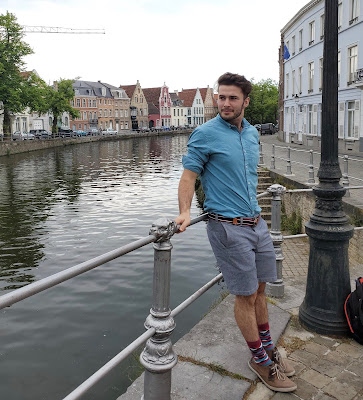 |
| Navigating the dark Zonneberg caves |
Working with the heart-on-a-chip project has been an
incredibly engaging experience. The project aims to develop a chip technology
for in vitro cardiotoxicity assays. I’ve
been testing electrical stimulations on cardiac cells and evaluating the effect
of the cells on our microelectrodes. It’s been a lot of fun developing my
computational skills (which were quite rusty coming in), and I’ve made it my personal
goal to automate my data processing as much as possible. While I get to learn
new software, like Origin (which I’ve found to have similarities to GraphPad
Prism), I also get to apply some of my experience with image analysis to
extract as much data as possible from my experiments. It’s also a pleasant
break to only need to pipette around one or two days a week – some of my
experiments involve wires more than cells and liquids. There is a lot of
debugging that needs to be done with our setup, and I’m looking towards making
the jump from MATLAB to Python in my work, but I’ve been getting a lot of
helpful support from my supervisor.
With my team’s after-work dinners at Oude Markt, I have been
able to share some of my American life while receiving cultural insight from my
coworkers. Attending a European-style thesis defense (which, unlike the American
public defenses I had been to in the past, was quite stressful with a jury full
of questions) and having a blast at imec festival are just some of the
highlights. I’ve even been able to connect with someone on my team who was a
post-doc at Hopkins in the lab of my advisor! These have been opportunities for
me to discuss and juxtapose the American research atmosphere with the one here.
Per suggestion of my team to use Flixbus, I took a weekend trip
to Amsterdam with Christina and Sharada. There, we visited the Van Gogh museum,
explored the city streets, and had a taste of the Holland gastronomy. Likewise,
I took the Belgian rail with Elmer to visit the underground Zonneberg Caves and
ENCI quarry in Maastricht. However, I’ve found that there are a lot of places
to explore in Leuven itself, and I’ve also been taking time to explore locally
with my bike. Starting with the bustling city center and serene libraries, I’ve
been gradually immersing myself in Leuven life.
 |
| Some of the Zonneberg manmade cave entrances |













